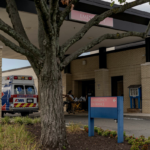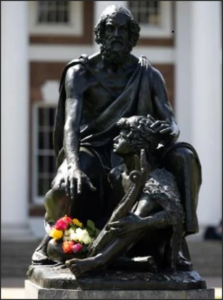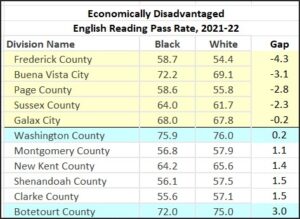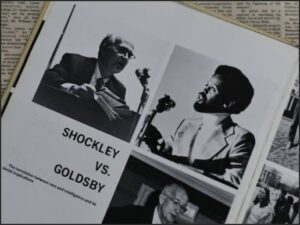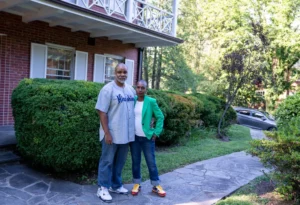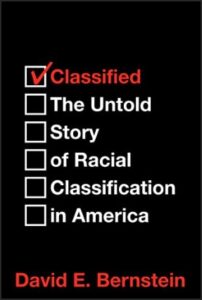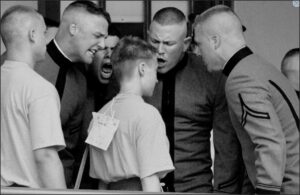
This photo, taken in 1997, shows a female VMI Rat, Megan Smith, undergoing a grilling by upper class cadets during Hell Week. The Washington Post republished the photo last week to mark the 25th anniversary of women entering VMI, effectively reinforcing the image of VMI as a sexist institution. Remarkably, when staff writer Ian Shapira tracked her down in southern France, where she now works as an attorney, Smith (now Megan Portavoce) said the photo was taken out of context. “I looked liked … I was scared. But I didn’t feel scared,” she said. “I think the photo is often taken out of context. It’s used as proof of harassment towards women. But it was equal opportunity harassment that day.” Male freshmen were verbally abused, too, she said. “Everyone gets yelled at. They just find something to needle you with, to get under your skin. It’s part of the system of testing everyone.”
by James A. Bacon
When the Virginia Military Institute re-opened for its fall semester Monday with its usual parade-ground pageantry, it counted only 375 cadets in the 1st-year class. That’s down 24% from 494 the previous year.
“We believe there are a number of contributing factors,” says VMI spokesman Bill Wyatt. “Schools throughout the commonwealth and the nation are dealing with similar declines.” Nationally, there are 1.3 million fewer first-time college students this year than last, so VMI is competing for a smaller number of applicants. Moreover, the COVID pandemic depressed attendance at VMI’s open house program, he says. Personal tours are critical for showcasing the military academy’s unique value proposition.
But others offer different explanations. A large alumni contingent has been unhappy with developments at VMI since The Washington Post and former Governor Ralph Northam painted the academy as a relentlessly racist and sexist institution. They point to the wave of negative publicity generated by a Northam-ordered investigation into racism and sexism that was amplified by the media. These alumni also charge that the infiltration of leftist ideology at VMI is turning off families who still respect its core traditions of honor, character and patriotism.
“If the public believes VMI is racist and sexist, not to mention now woke,” says Carmen Villani, a vocal critic, “who wants to send their sons or daughters there?” (See his column accompanying this one.)
In seeming fulfillment of the alumni critique, the Post last week published a retrospective upon the occasion of the 25th anniversary of women first admitted to VMI. It led with a photo of a slight 1st-year woman, Megan Smith, being shouted at by hulking, grimacing, blood vessel-popping males. The headline to last week’s story: “VMI’s male cadets were berating her. The 1997 Hell Week photo went viral.”
An honest accounting of VMI’s plummeting 1st-year enrollment would acknowledge that both VMI and its critics have valid points. Continue reading →

